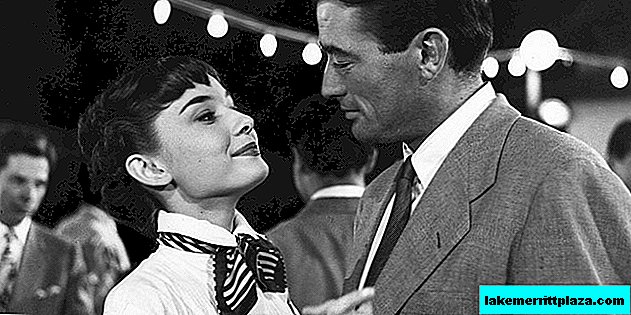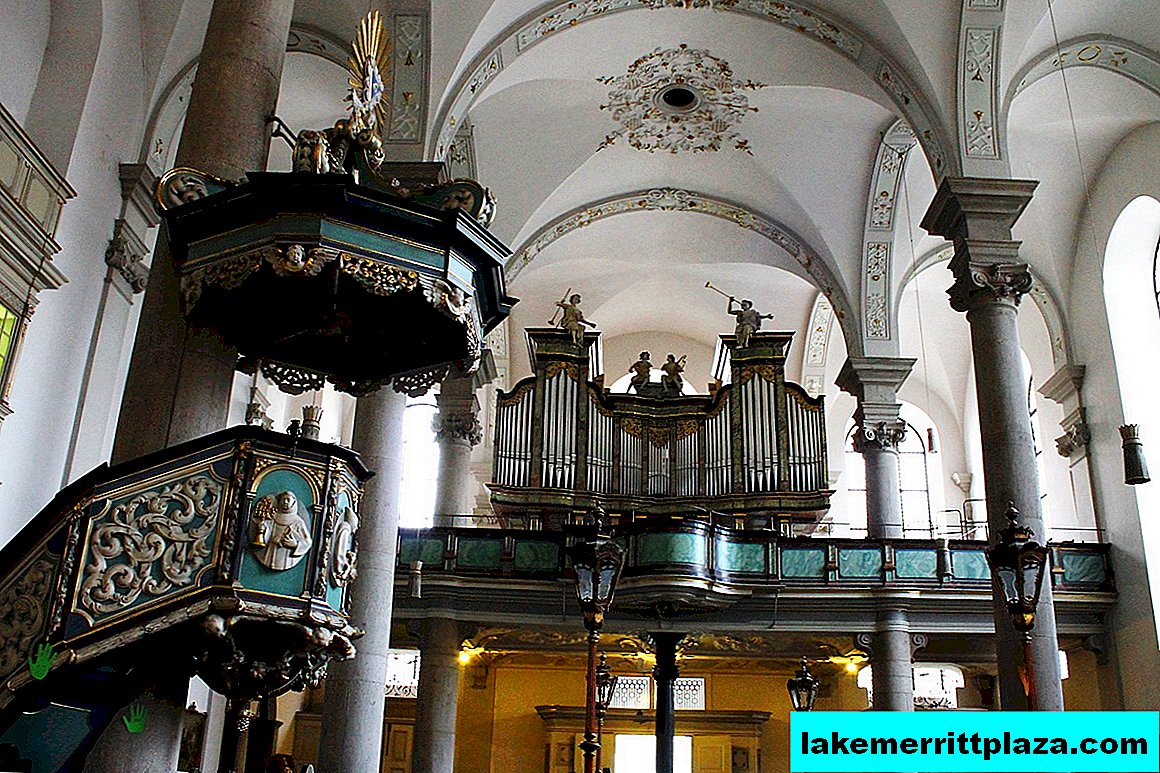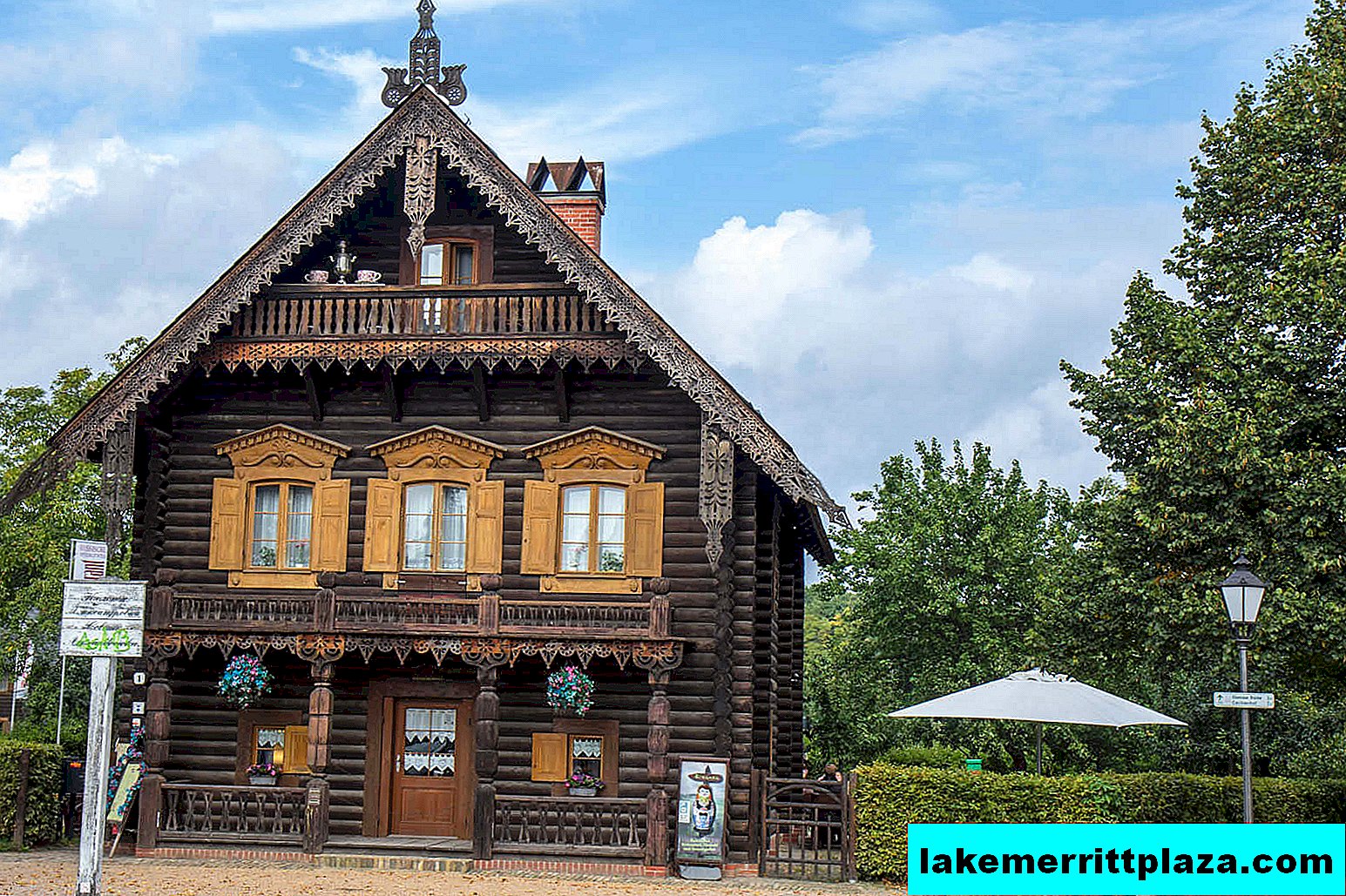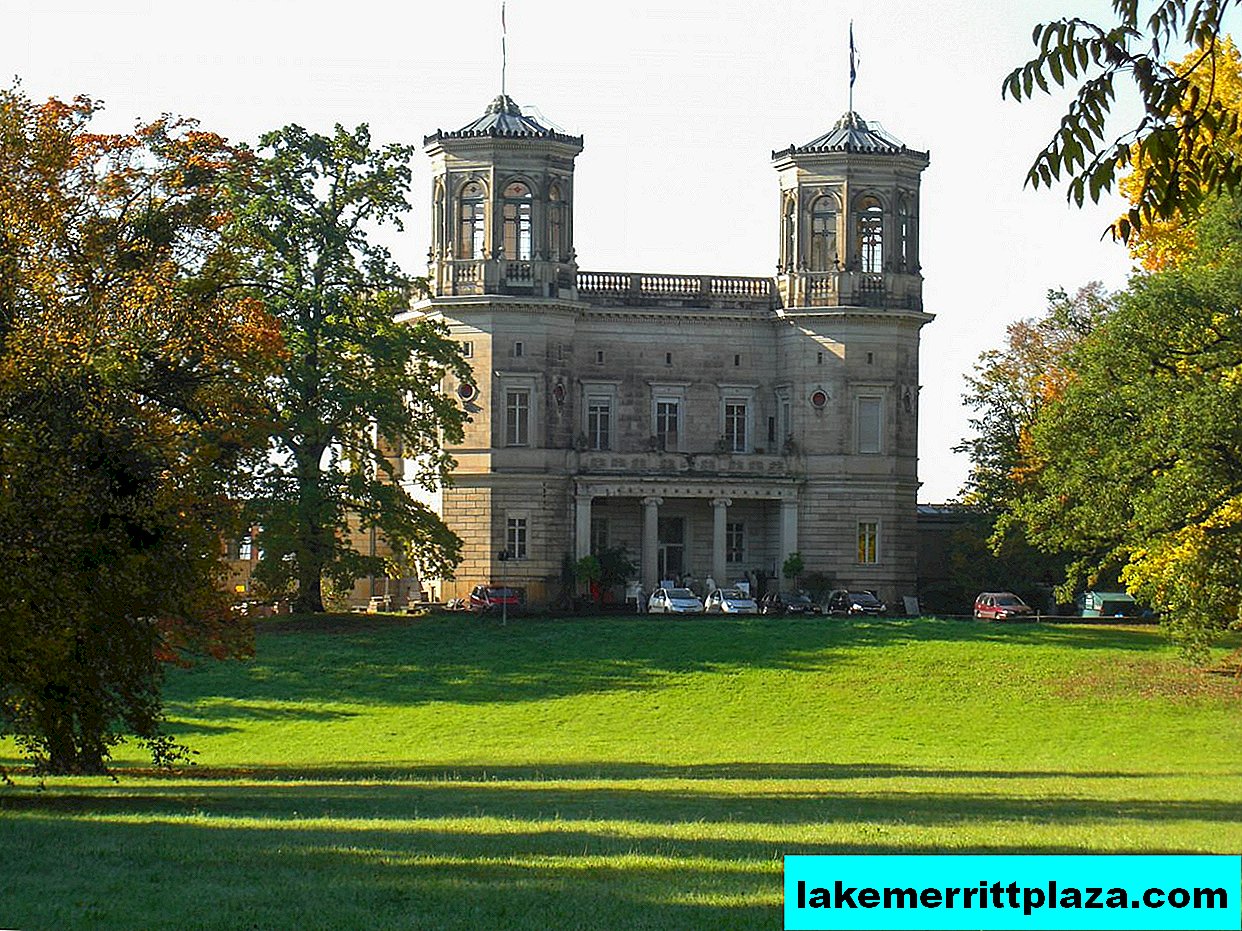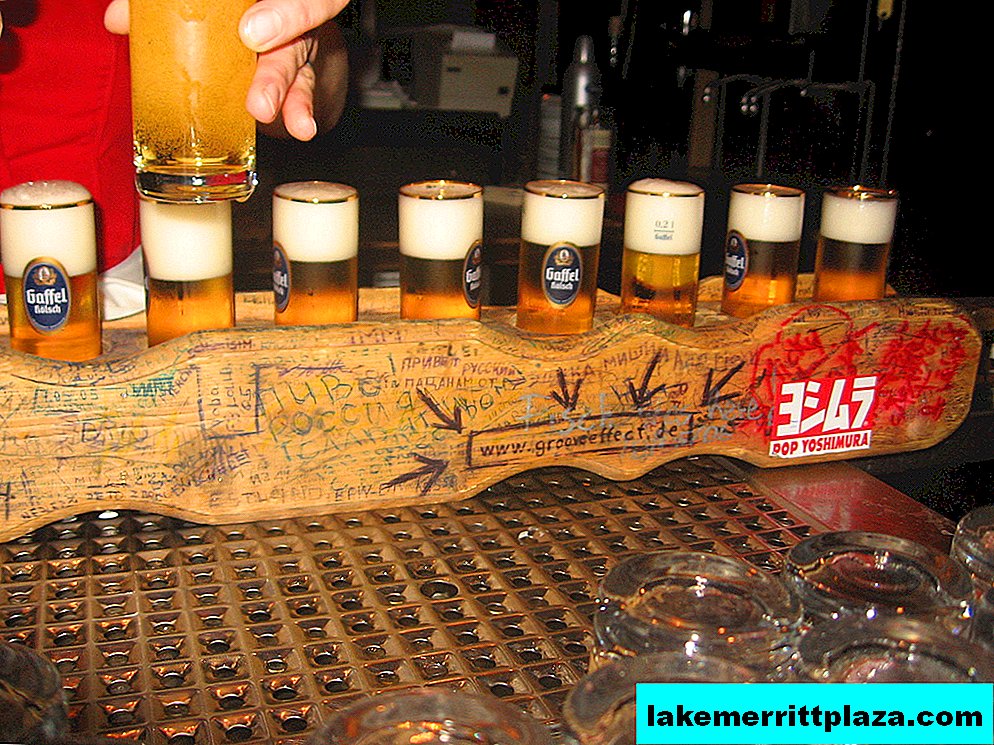All wines are like women. Some are famous, but only gourmets appreciate their taste. Others are not so popular, but good to impossible. And there is Chianti - dry red Tuscan wine with the perfect balance of fame and splendor. It is considered the most famous Italian grape drink outside the republic. The English, out of love for him, jokingly call Tuscany Chiantishire. Chianti is mentioned not only in books and films. Even the heroes of popular computer games are not averse to treat yourself to a glass of this wine.
Why is it so beloved and how is it different from other drinks? Now we will try to figure it out.

Story
Italian historians believe that the life of Chianti began in the time of the Etruscans. The methods of winemaking were successfully applied in the Roman Empire and survived even after the barbaric destruction thanks to the Benedictine monks.
The term "chianti" in the documents first appears in the year 790. But the earliest mention with a specific reference to Chianti wine dates back to the 13th century, when viticulture flourished in Florence (Firenze). Merchants from the villages of Castellina, Gaiole and Radda formed the Lega del Chianti to produce and promote local wine based on Sangiovese.
In 1796, Cosimo III de Medici, the Grand Duke of Tuscany issued a decree that the 3 villages of the League, as well as the town of Greve, were officially recognized as the only producers of Chianti. This restriction existed until July 1932, when the Italian government added the following areas to the original zone: Barberino Val d'Elsa, Ciocchio, Robbiano, San Casciano in Val di Pesa and Strada. Subsequent expansion in 1967 will result in the Chianti production area covering a very large area in central Tuscany.
By the 18th century, Chianti had become a widely recognized red wine, but its exact composition was not known at that time. Only as a result of the work of Baron Bettino Ricasoli in the middle of the 19th century a modern recipe for a drink based on grapes was formed: 70% Sangiovese, 15% Canaiolo and 10% Malvasia Bianca and 5% other local varieties.
By the beginning of the 20th century, the Chianti producer league could not satisfy the growing demand for a drink. As a result, alcohol began to imitate not only in other parts of Tuscany, but also outside the region. It took the creation of a body to protect the brand from fakes.
On May 14, 1924, a group of 33 manufacturers founded the Consortium to protect Chianti and its brand. Its symbol was the "black rooster in a golden field", which to this day is the hallmark of the Classico drink.

Why exactly the black rooster? In Florence, there is a beautiful legend that the bird contributed to the expansion of its territory towards Siena.
During the rivalry between the two regions, their residents decided to redraw the borders. Unable to agree, they decided that with the first cry of a rooster from each city, a horseman will go towards each other. Where they meet, there will be a treasured mark. To the great joy of the Florentines, their black cock woke up a little earlier than his Siena counterpart. As a result, thanks to a modest bird, Florence managed to pinch off part of the land near Siena.

In 1967, the Chianti Classico code received the DOC category, and in 1984 he was awarded the highest award in the form of the DOCG quality mark.
Characteristics and production technology
The Ricasoli formula for the used grape varieties has been successfully applied at the present time. Although some manufacturers, trying to get away from the old principles, make Chianti with 100% Sangiovese content.
Admixtures of additional types of raw materials do not give complete freedom to winemakers, as there are strict restrictions in this regard. For example:
- All grapes should be grown exclusively in Toscasna.
- White berries (37 varieties are allowed to be added) together or separately should not exceed 10% of the total volume. And for Chianti Classico since 2006, such grapes are completely banned.
- The amount of raw materials from the vines of Cabernet Franc and Cabernet Sauvignon is not more than 15%.
- Vineyards grow exclusively in the hills at an altitude of not more than 700 m above sea level.
- Any form of stimulation of vines growth is prohibited, except irrigation.
Chianti production method refers to the classic winemaking. This is a slow secondary fermentation method. It is allowed to slightly dry the berries before starting production.
All stages take place in the DOCG zone. Small exceptions are allowed, but with the prior approval of the regulatory authorities.
Compared to other Chianti wines, it does not require long-term aging. The minimum exposure takes place until March 1 of the year following the year of harvest. Species marked Riserva have been awaiting bottling for more than 2 years.
Historically, wine has been associated with a squat, bulb-shaped bottle in a straw basket called fiasco. However, few manufacturers today adhere to traditional packaging. Most pour Chianti into standard-shaped bottles.
Types and Description
Some call Chianti "Bordeaux from Italy" because the flexibility of the recipe creates a wide variety of drink styles. Light, modest wines, as a rule, have a higher proportion of white grape varieties in the blend. Red berries make the taste of alcohol richer and richer.
The following types of wine are distinguished depending on the sub-zone of Chianti production:
- Classico (Classico);
- Collie Aretini;
- Collie Pisane;
- Collie Senesi;
- Collie Fiorentini (Colli Fiorentini);
- Montalbano;
- Montespertoli (Montespertoli);
- Rufina
Subspecies include Riserva and Superiore. If the name of the wine is supplemented by the word Riserva - this is a seasoned option (at least 2 years). Superior is a distinctive designation of wines with more stringent production rules. Vineyards for such drinks grow throughout the Chianti region, except for the Classico zone.
Wine cannot be sold to the consumer for up to 9 months of aging, of which 3 it must be held in a bottle.
Now let's get to know each of the Chianti species.
Chianti Classico DOCG
Chianti Classico DOCG - dry red wine bearing the name of the land on which it appeared. The territory of its production covers 70,000 hectares between Florence and Siena and includes 8 municipalities. The content of Sangiovese grapes in the drink is from 80 to 100%. Allowed to use 20% of other red varieties: Kanayolo, Colorino, Cabernet Sauvignon and Merlot. Until 2005, 6% of the white grapes Malvasia and Trebbiano may be present in the bottles with the harvest. Berry picking takes place in October. Best Sangiovese goes to make wine marked Riservawith a minimum maturity of 24 months. Of these, 3 last pass directly into the bottle, the rest - in oak barrels.

In 2014, a new category of Chianti Classico Gran Selezione appeared. Raw materials and wine production are subject to more stringent requirements. Such a name is awarded to a drink only after passing the test for "professional suitability": laboratory tests and the approval of the tasting commission.
Chianti Classico has a bright ruby color and a deep smell. Riserva has a pomegranate hue and berry-spicy aroma. The taste is dry, fruity, tending over time to a more velvety. The minimum exposure period is 11 months. The amount of sugar is 4 g per 1 liter. Alcohol content - 12%, for wine marked Riserva - 12.5%.
Before drinking, the wine should be saturated with oxygen, so Chianti is opened a few hours before tasting. Served at a temperature of 16-18 degrees in a glass "Tulip".
A classic with low tannin, suitable for accompanying red meat on the grill. Riserva goes well with game.
Chianti Colli Aretini DOCG
Chianti Collie Aretini is a red wine made in the province of Arezzo. The proportion of Sangiovese grapes in it ranges from 75 to 100%. Additionally, they can use: Kanayolo (up to 10%), Trebbiano or Malvasia (up to 10%) and not more than 10% of the varieties specified in the specification.

The wine is put on sale starting in June of the year following the year of harvest. A variety of Riserva matures for more than 26 months.
The color of Collie Aretini is ruby red. The smell is rich, wine with the aroma of violets and ripe red fruits. The taste is dry, fresh, invigorating and energetic. The alcohol content is 12%, for Riserva - 12.5%.

It is in perfect harmony with the first dishes of traditional Tuscan cuisine, as well as with fried red meat. Ideally - with beef.
Chianti Colli Pisane DOCG
Chianti Collie Pisane - wine from the province of Pisa (Pisa), the production area of which extends to 250 hectares. Sangiovese occupies 70-100% of the total volume of raw materials. The proportion of white grapes should not exceed 10%. Wine is traded no earlier than March 1 of the year following the harvest.

The color is ruby, tending to garnet with age. The smell is saturated with the aroma of violets. The taste is harmonious, fruity with a slight tannin. The alcohol content is at least 11.5%, for Riserva - 12.5%.
Collie Pisane is an elegant and soft drink. It is easy to drink. Unbeatable for fish dishes.
Chianti Colli Senesi DOCG
Chianti Collie Senesi is a legacy of the winemaking tradition of the province of Siena. The lands of this territory are different from each other. Therefore, drinks in the northern part are more saturated and with a lower alcohol content, in the southern part they are deep, slowly ripening. Sangiovese's share is at least 80%.
The color is intense ruby red. The aroma is bright with notes of fresh cherry, tobacco and violet. The taste is deep, round with moderate acidity and dense tannin. The alcohol content is 12%.

It goes well with vegetable salads seasoned with olive oil and truffles.
Chianti Colli Fiorentini DOCG
Chianti Collie Fiorentini is made in a hilly area around Florence, which includes the cities: Montelupo Fiorentino, Fiesole, Lastra, Signa, Scandicci, Impruneta, Imprunet Bagno a Ripoli (Bagno a Ripoli), Rignano sul Arno (Rignano sull'Arno) and Pontassieve (Pontassieve). The volume of its production is 5% of the total Chianti. The content of grape varieties is distributed as follows: Sangiovese - 88%, Kanayolo - up to 8%, Malvasia red and white - up to 4%.

The color is bright red, transparent. The aroma is intense, persistent with notes of flowers and spices. The taste is dry, full with moderate tanning. The alcohol content is from 12.5 to 16%. A distinctive symbol of Chianti Fiorentini is a stylized lion standing on its hind legs.
The wine is quite balanced, so suitable for everyday use. It goes well with all dishes: snacks, meat, cheeses, vegetable stews.
Chianti Montalbano DOCG
Chianti Montalbano is a red wine named after a mountain range extending to the provinces of Pistoia, Prato and Florence. Currently, 180 wineries produce it. At least 75% Sangiovese, up to 10% Kanayolo, up to 10% Malvasia Bianca and Trebbiano (together or separately) are present in the mixture of raw materials.

The organoleptic characteristics of wine coincide with those common to many types of Chianti: color - ruby red, wine aroma with notes of violet. The alcohol content is 12-12.5%.
Montalbano goes well with salami, rabbit meat, main dishes and game.
Chianti Montespertoli DOCG
Chianti Montespertoli is another version of Florentine wine. Produce it in the municipality of the same name. The distribution of grape varieties is as follows: Sangiovese - from 70%, Merlot, Canayolo, Cabernet, Sauvignon, Malvasia, Trebbiano - together no more than 30%.

The young wine has the color of red ruby, the Riserva has pomegranate. The aroma is floral. The taste is harmonious, fruity, slightly tannin, velvety, has good acidity. The minimum alcohol content is 11.5%.
It accompanies with red meat and medium-aged cheeses.
Chianti Rùfina DOCG
Chianti Rufina - red wine from the smallest sub-zone of Chianti production. They make it in the same region of the province of Florence. The share of Sangiovese in the drink is from 75 to 100%, Kanayolo - up to 10%, Trebbiano Toscano and Malvasia del Chianti - not more than 10%.
Enter Rufina on sale no earlier than June 1, following the year of harvest. The color is ruby. Intense aroma with shades of violet, enhanced with exposure. The taste of young wine is harmonious, slightly tannic. A mature drink acquires a velvety softness. The alcohol content is from 12 to 12.5%.

Due to its pronounced freshness, Chianti Rufina is perfect for grilled meats, legumes and traditional Tuscan meat dishes.
Which Chianti is considered the best?
When choosing an alcoholic drink, I want to dwell on the best option. As you know, there are spots in the sun. Therefore, it is absolutely necessary to know specifically what to purchase for the next banquet. In Italy, the Vinibuoni d'Italia Guide, based on the opinions of professional critics and ordinary consumers, is being published to help buyers in Italy.
According to him, in 2017, the best Chianti bottles were recognized:
- Chianti Classico DOCG Gran Selezione 2013, winery Castello d'Albola di Radda, price - 27-29 Euros;
- Chianti Classico DOCG Riserva "Bandini Villa Pomona" 2013, winery Pomona di Castellina, price 18-20 Euro;
- Chianti Classico DOCG Riserva 2012, winery Badia a Coltibuono di Gaiole, price - 25-27 Euros;
- Chianti Classico DOCG 2013, winery Val delle Corti, Radda, price - 15-17 Euro;
- Chianti Classico DOCG Riserva "Vigneto Il poggio" 2011, Castello di Monsanto, Barberino Val d'elsa, price - 44-47 Euros.
It is worth noting that Vinibuoni d'Italia in its choice relies on the optimal ratio of price and quality of the drink.
Price in Russia
The range of prices for Chianti in domestic stores is very large. The cost of the drink depends on the manufacturer and the aging time. For example, if young wine can be purchased in the range from 700 to 3000 rubles, then for the 2007 Chianti harvest will have to fork out for about 100,000.

Overview of the Tuscan celebrity is complete. Drinking a glass of Chianti in Tuscany and dying of pleasure is a great challenge for your next vacation. Live modestly, joke funny, think soberly and remember: "Passing through the body, Chianti remains in the heart forever!"

